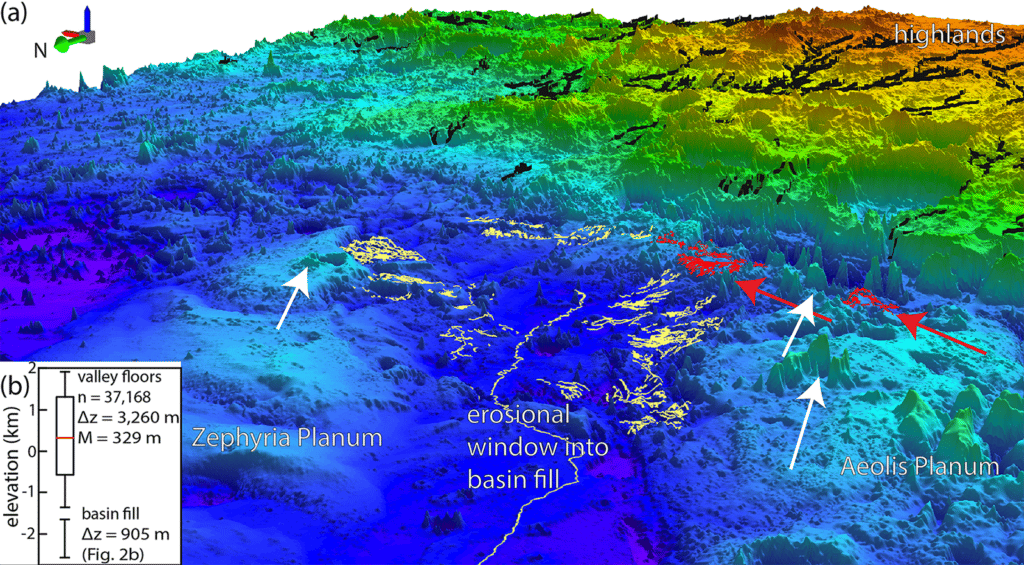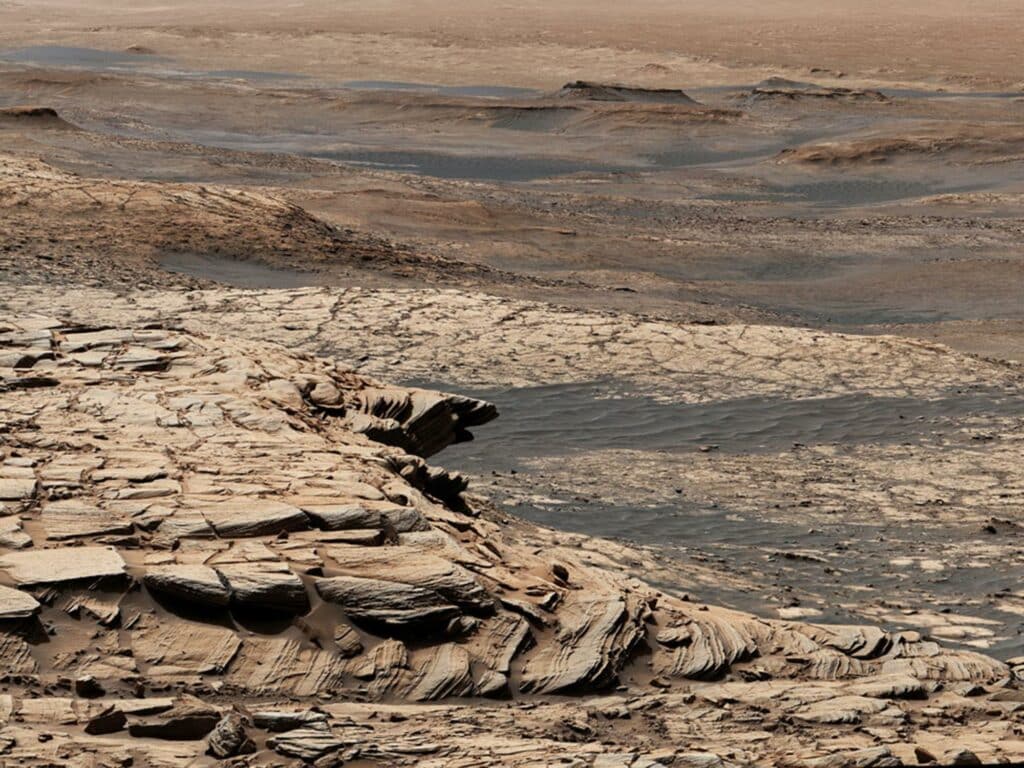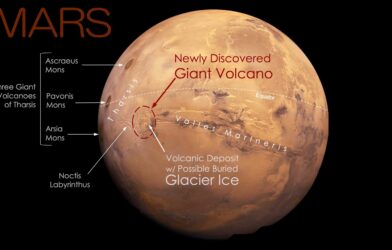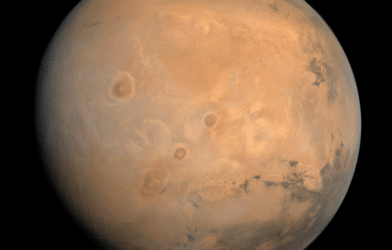Traces of ancient ocean have been discovered on Mars, raising hopes life may be discovered on the Red Planet. Scientists used maps to find traces of an ocean in the North of the planet, which means there is a “higher potential” for life on Mars than previously thought.
The maps provide the strongest evidence yet that the planet once experienced sea level rises consistent with a warm and wet climate rather than the harsh, frozen landscape that exists today.
“What immediately comes to mind as one the most significant points here is that the existence of an ocean of this size means a higher potential for life,” says lead study author Benjamin Cardenas, an assistant professor of geosciences at Penn State University, in a statement. “It also tells us about the ancient climate and its evolution. Based on these findings, we know there had to have been a period when it was warm enough and the atmosphere was thick enough to support this much liquid water at one time.”
Scientists have long debated whether Mars was once home to an ocean.
Using topography data, the team found clear evidence of a 3.5 billion year old shoreline around 900 meters thick, which covered thousands of square kilometers.
“On Earth, we chart the history of waterways by looking at sediment that is deposited over time,” says Cardenas. “We call that stratigraphy, the idea that water transports sediment and you can measure the changes on Earth by understanding the way that sediment piles up. That’s what we’ve done here — but it’s Mars.”

The researchers used software developed by the United States Geological Survey to map data from NASA’s Mars Orbiter Laser Altimeter. They discovered more than 6,500 kilometers of river ridges and grouped them into 20 groups, which showed they were probably eroded river deltas or submarine channel belts, the remnants of an ancient Martian shoreline.
Elements of rock formations such as ridge-system thicknesses, elevations, locations and possible sedimentary flow directions helped the team understand the evolution of the region’s geographical features. The area that was once ocean is now known as Aeolis Dorsa and contains the densest collection of river ridges on the planet.
“The rocks in Aeolis Dorsa capture some fascinating information about what the ocean was like. It was dynamic. The sea level rose significantly. Rocks were being deposited along its basins at a fast rate,” adds Cardenas. “There was a lot of change happening here.”
On Earth, the ancient sedimentary basins contain the records of evolving climate and life.
If scientists want to find a record of life on Mars, an ocean as big as the one that once covered Aeolis Dorsa would be the most logical place to start. Cardenas says the goal of NASA’s Curiosity Rover mission, which involves a car-sized rover moving around the planet looking for clues about it, is to look for signs of life.
“It’s always been looking for water, for traces of habitable life,” notes Cardenas. “This is the biggest one yet. It’s a giant body of water, fed by sediments coming from the highlands, presumably carrying nutrients. If there were tides on ancient Mars, they would have been here, gently bringing in and out water. This is exactly the type of place where ancient Martian life could have evolved.”
The team have mapped what they have determined are other ancient waterways on Mars.
The researchers determined the landforms called fluvial ridges, found widely across Mars, are likely ancient river deposits eroded from large basins similar to Aeolis Dorsa.
The findings are published in the Journal of Geophysical Research Planets.
Article written by Gwyn Wright, South West News Service











-392x250.png)